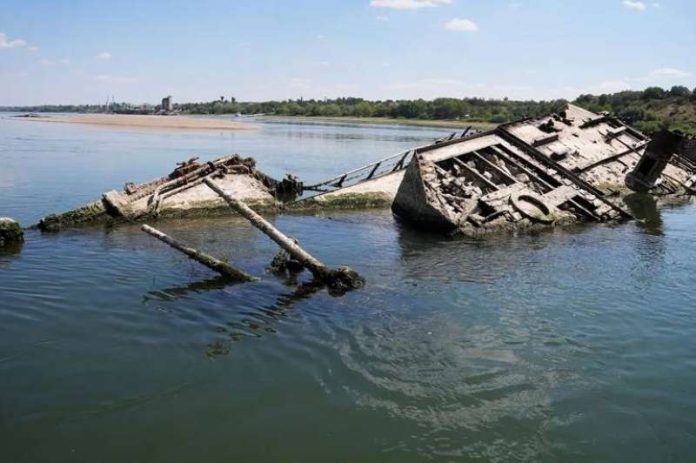Europe’s worst drought in years has reduced the water level in the Danube to its lowest level in nearly a century, exposing the explosive-laden hulls of dozens of German warships that sank during World War Two near the Serbian river port of Prahovo.
These ships were among hundreds sunk by Nazi Germany’s Black Sea Fleet in the Danube in 1944 as it retreated in the face of advancing Soviet forces.
These ships still impede river navigation during the low water level. However, this year’s drought, which scientists consider a result of global warming, has revealed more than 20 structures along the Danube River near Brahovo in eastern Serbia.
Many of them still contain tons of ammunition and explosives, which poses a threat to navigation. “The German fleet left a great ecological disaster that threatens us residents of Prahovo,” said Velimir Trajelovic, a 74-year-old pensioner from Prahovo who has written a book about German ships.
Workers in the local fishing sector are also at risk, including those from Romania, which lies on the other side of the river. The months of drought and record high temperatures have choked river traffic in other vital regions of Europe, such as Germany, Italy and France.
The authorities in Serbia resorted to dredging to keep the shipping lanes on the Danube River open. Some structures at Prahovo reduced the area of the navigation lane in this part of the Danube to only 100 meters instead of 180 meters.
In March, the Serbian government called for a bid to salvage the hulls of ships and remove ammunition and explosives. The cost of the operation was estimated at 29 million Euros ($30 million).

















